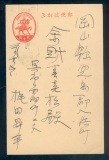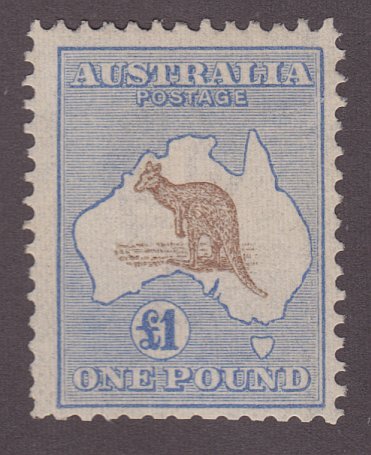
Discussion - Member to Member Sales - Research Center

Discussion - Member to Member Sales - Research Center



1 Member
likes this post.
Login to Like.
Without 'Postes Algerie,' with no RF and no monetary value, I would assume they are Cinderellas.

Login to Like
this post
Me thinks you're right. Thank you.

Login to Like
this post
Cinderellas
International Philatelic Exposition of North Africa - Centennial Anniversary of French Annexation. They also come in different colors.
Don

1 Member
likes this post.
Login to Like.
I do not know if cenderellas means in french language "vignettes".
These "vignettes" have been issued for French century of Algeria annexion 1830-1930,there was also an internsting post card issue on the same subject.
There is name of 4 south algerian landscapes town, these twon are still attractive by their wonderful exotic views.
I do not know if there is a specialized catalogue for such stuffs, I will check and revert if there is one.

1 Member
likes this post.
Login to Like.
"Cinderella" means a postage-stamp-like object (paper, printed, perforated, gummed, etc) that is not a government-issued stamp.
Google "philatelic glossary", and you can find more, well, definitive definitions.
Cheers,
/s/ ikeyPikey

Login to Like
this post
A description of the philatelic word "vignette," from Wikipedia:
"In philately, the vignette is the central part of a postage stamp design, such as, a monarch's head or a pictorial design, which often shades off gradually to the edges of the stamp.
"The central vignette is often surrounded by a frame which may be printed separately and is normally of a different colour. The plate from which the vignette is printed is known as the vignette plate.
"Printing errors have sometimes led to the vignette being inverted. Perhaps the most famous example is the Inverted Jenny."
An English dictionary definition of vignette:
"A brief evocative description, account, or episode / A illustration or portrait photograph which fades into its background without a definite border. / An ornamental design filling a space in a book or carving, typically based on foliage."

Login to Like
this post
definition of vignette:
It's not a salad dressing ?


1 Member
likes this post.
Login to Like.
From the Oxford Dictionary.
Vignette is derived from the word vinet, A vinet was a running or trailing ornament or design in imitation of the branches, leaves, or tendrils of the vine, employed in architecture or decorative work.

Login to Like
this post

I find it strange that I can't identify these in Scott. ?? Thank you.

1 Member
likes this post.
Login to Like.
12:28:15pm
re: Algeria 1930
Without 'Postes Algerie,' with no RF and no monetary value, I would assume they are Cinderellas.

Login to Like
this post

re: Algeria 1930
Me thinks you're right. Thank you.

Login to Like
this post

re: Algeria 1930
Cinderellas
International Philatelic Exposition of North Africa - Centennial Anniversary of French Annexation. They also come in different colors.
Don

1 Member
likes this post.
Login to Like.

Approvals
re: Algeria 1930
I do not know if cenderellas means in french language "vignettes".
These "vignettes" have been issued for French century of Algeria annexion 1830-1930,there was also an internsting post card issue on the same subject.
There is name of 4 south algerian landscapes town, these twon are still attractive by their wonderful exotic views.
I do not know if there is a specialized catalogue for such stuffs, I will check and revert if there is one.

1 Member
likes this post.
Login to Like.

re: Algeria 1930
"Cinderella" means a postage-stamp-like object (paper, printed, perforated, gummed, etc) that is not a government-issued stamp.
Google "philatelic glossary", and you can find more, well, definitive definitions.
Cheers,
/s/ ikeyPikey

Login to Like
this post

re: Algeria 1930
A description of the philatelic word "vignette," from Wikipedia:
"In philately, the vignette is the central part of a postage stamp design, such as, a monarch's head or a pictorial design, which often shades off gradually to the edges of the stamp.
"The central vignette is often surrounded by a frame which may be printed separately and is normally of a different colour. The plate from which the vignette is printed is known as the vignette plate.
"Printing errors have sometimes led to the vignette being inverted. Perhaps the most famous example is the Inverted Jenny."
An English dictionary definition of vignette:
"A brief evocative description, account, or episode / A illustration or portrait photograph which fades into its background without a definite border. / An ornamental design filling a space in a book or carving, typically based on foliage."

Login to Like
this post

re: Algeria 1930
definition of vignette:
It's not a salad dressing ?


1 Member
likes this post.
Login to Like.

re: Algeria 1930
From the Oxford Dictionary.
Vignette is derived from the word vinet, A vinet was a running or trailing ornament or design in imitation of the branches, leaves, or tendrils of the vine, employed in architecture or decorative work.

Login to Like
this post

